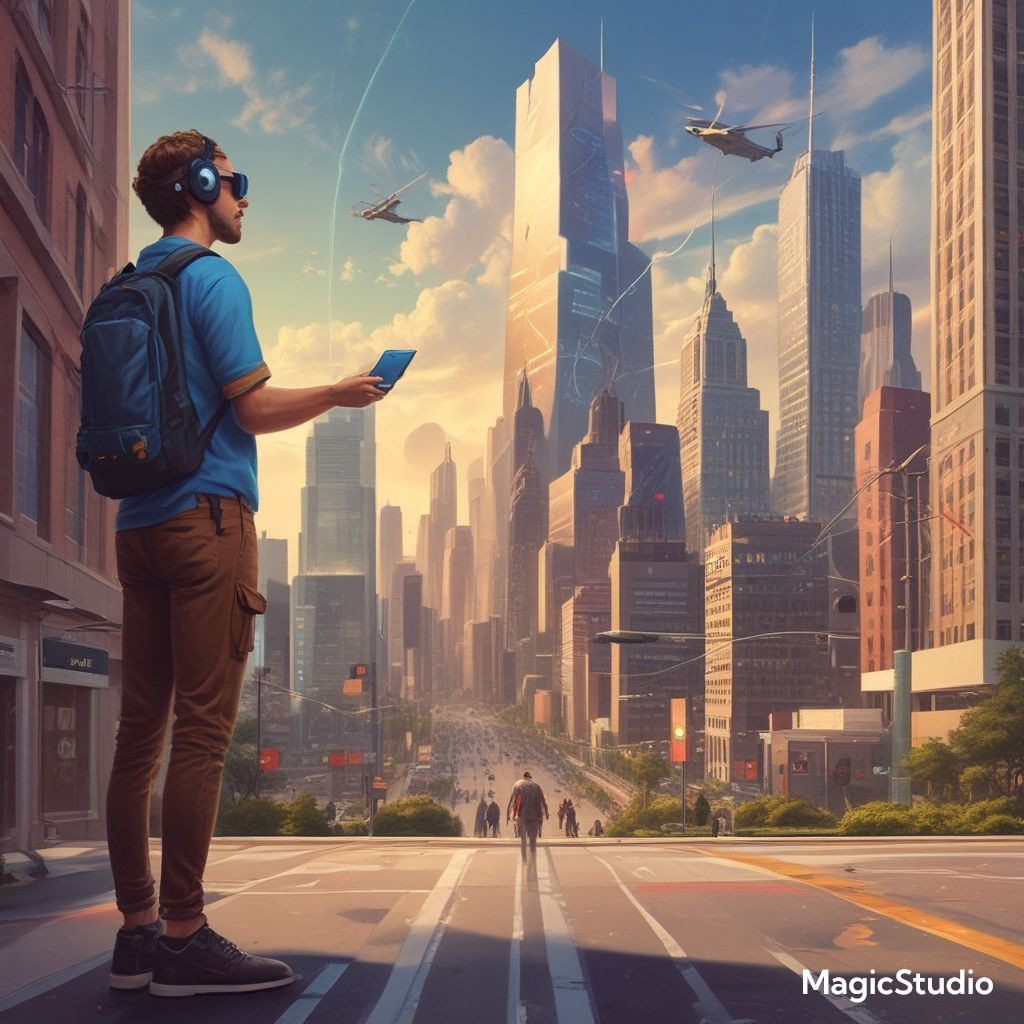The Rise of Augmented Reality: What to Expect in 2025

Augmented Reality (AR) is quickly transitioning from a futuristic concept to an everyday experience. From gaming to shopping and remote work, AR is creating immersive digital worlds that blend seamlessly with our physical surroundings.
In 2025, AR is expected to reach new heights, impacting both tech users and businesses alike. This post will dive into the future of AR and how it’s transforming various industries.
1. What Is Augmented Reality (AR)?
Unlike Virtual Reality (VR), which immerses users in a completely virtual world, AR overlays digital content onto the physical world. Think of Snapchat filters, Pokémon Go, or using your phone’s camera to measure the size of a table. It’s an interactive experience, but you don’t leave the real world behind.
2. Why AR is Exploding in 2025
In recent years, AR technology has matured and become more accessible, with significant developments in:
- Hardware: Lighter, more affordable AR glasses and headsets.
- Software: More sophisticated AR apps, especially in gaming, shopping, and education.
- Connectivity: Faster internet speeds (like 5G) that allow AR to run seamlessly and in real-time.
3. AR’s Impact on Social Media in 2025
Social media platforms are incorporating AR into their features to create new, more engaging ways for users to connect. Here’s what to expect:
- AR Filters & Effects: More advanced filters for photos and live videos.
- Virtual Try-Ons: Social platforms like Instagram and Snapchat are already letting users try on products like clothes, makeup, and accessories using AR.
- Interactive Experiences: Instead of passive scrolling, users will interact with 3D virtual objects overlaid on the real world.
4. The Role of AR in E-Commerce
E-commerce companies are rapidly adopting AR to enhance the shopping experience. In 2025, expect to see:
- Virtual Showrooms: Customers can explore a store or product catalog from the comfort of their home, getting a feel for the items as if they were physically present.
- Try Before You Buy: AR lets shoppers see how items like furniture, decor, or clothes would look in their own spaces or on their bodies before purchasing.
- Enhanced Product Demonstrations: Brands will use AR to show their products in action in 3D, providing a more immersive and informative shopping experience.
5. AR in Gaming and Entertainment
AR is making waves in gaming, blending the digital and physical worlds in exciting ways:
- Immersive Gaming: Games like Pokémon Go have already shown the potential of AR, but expect more sophisticated, story-driven experiences in 2025.
- Live Events: Sports, concerts, and theater performances will use AR to enhance the viewer’s experience, such as 3D holograms or real-time stats during games.
- Film and TV: Directors and filmmakers will explore ways to incorporate AR into films for more interactive viewing.
6. AR in Remote Work and Education
The future of AR is also about enhancing how we learn and work remotely:
- Virtual Collaboration: Imagine working with a team in a shared virtual space, seeing 3D models or data visualizations in real-time.
- Immersive Learning: AR-based educational tools will help students interact with complex subjects like anatomy, history, or engineering.
- Real-Time Problem Solving: With AR, workers will be able to visualize solutions in the physical world while getting step-by-step instructions through their AR glasses.
7. Challenges and Privacy Concerns
As with any emerging technology, AR comes with its own set of challenges:
- Privacy Issues: The widespread use of AR devices can raise concerns about data collection, facial recognition, and location tracking.
- Digital Overload: The constant influx of AR notifications and interactions could contribute to information overload and distraction.
Conclusion: AR’s Potential is Limitless
The future of Augmented Reality is more than just games and filters—it’s a tool that will enhance work, play, and everyday life in profound ways. Whether it’s trying on clothes, learning new skills, or experiencing events in new dimensions, AR will shape our digital and physical worlds in 2025 and beyond.



